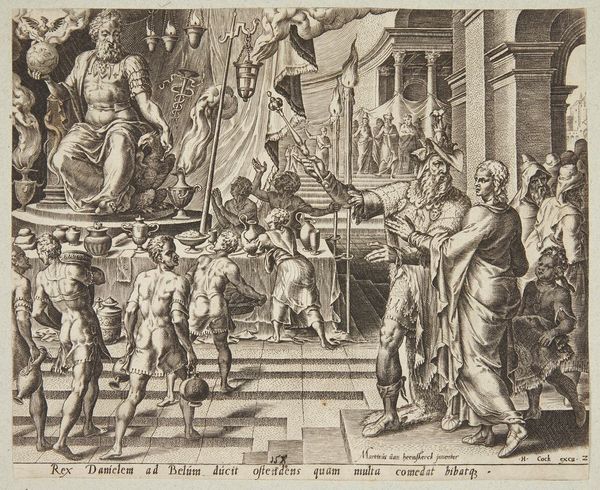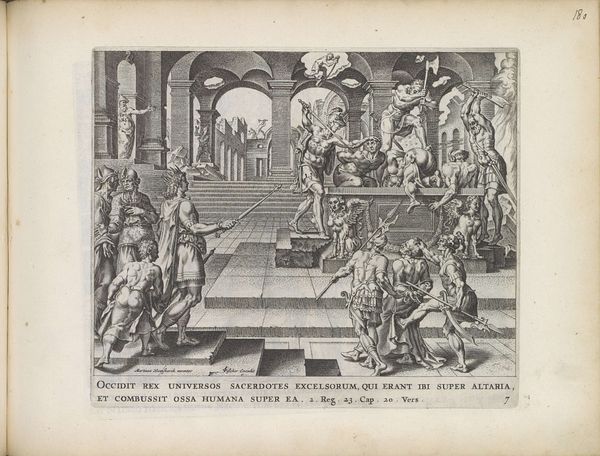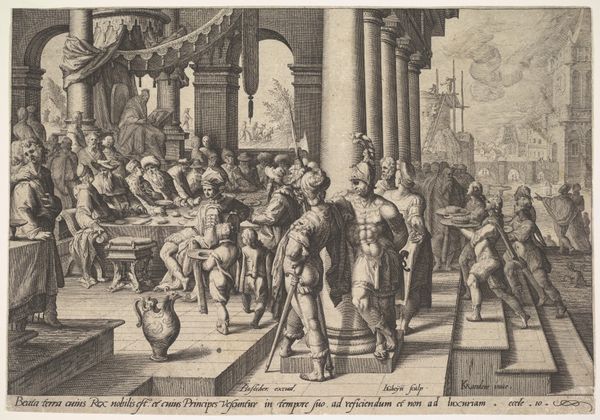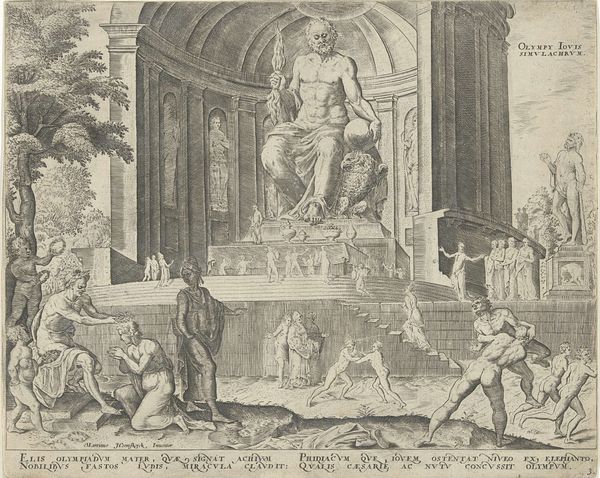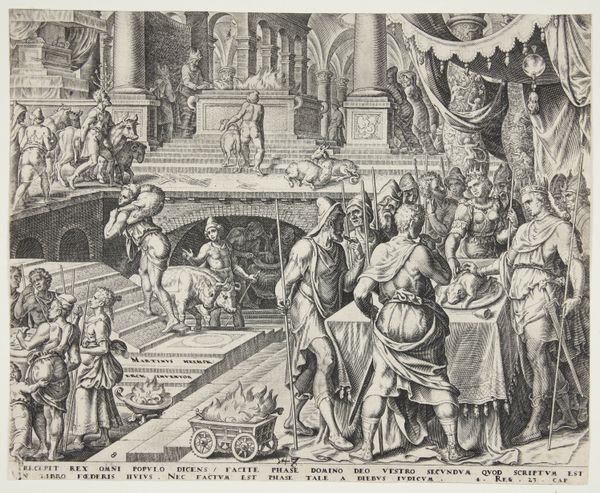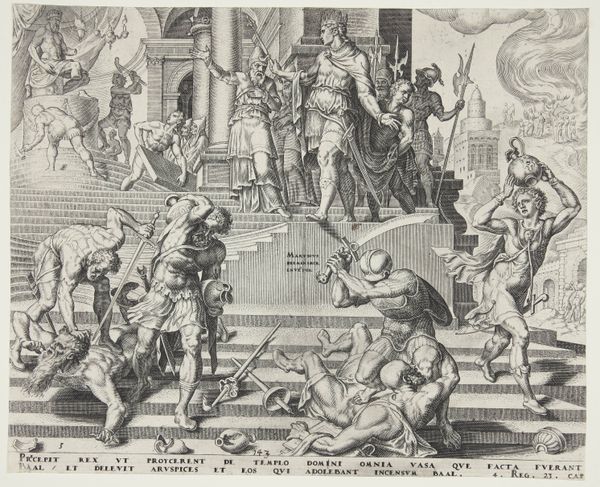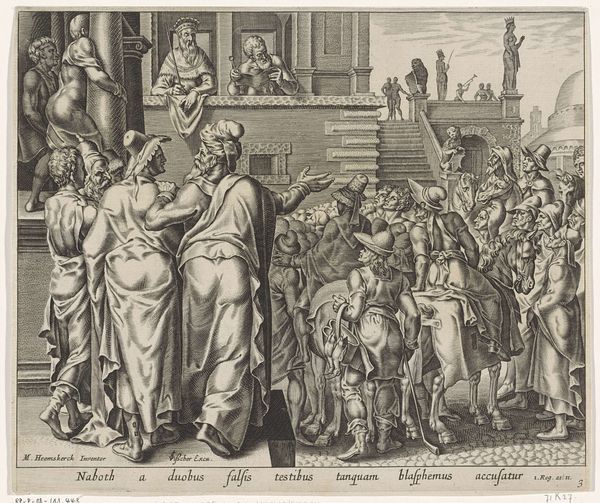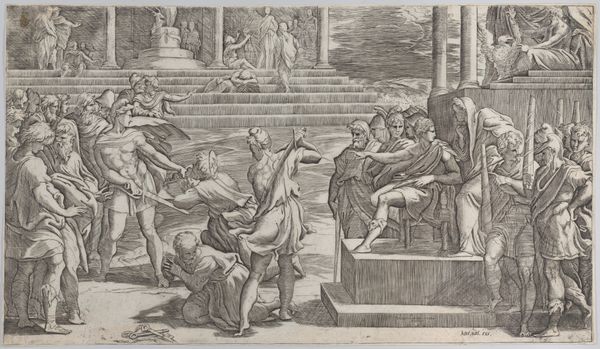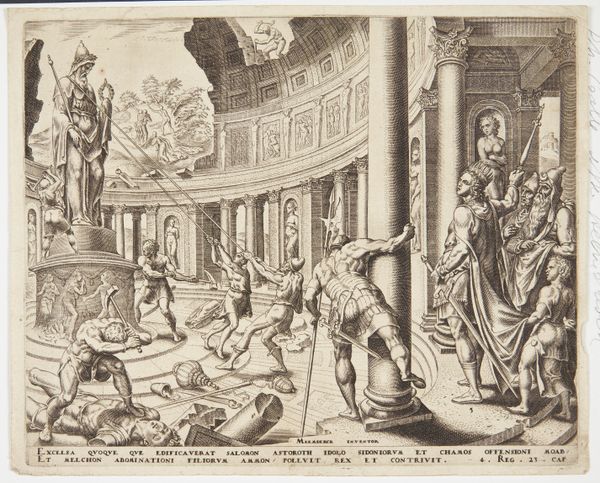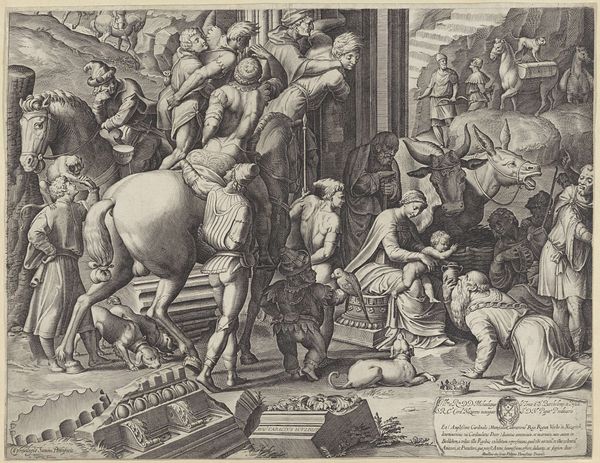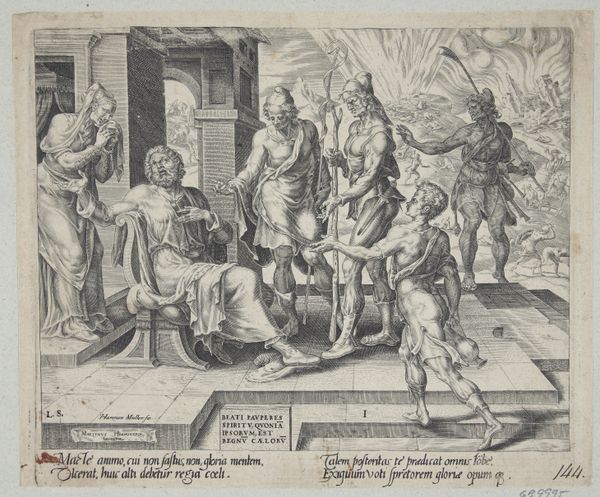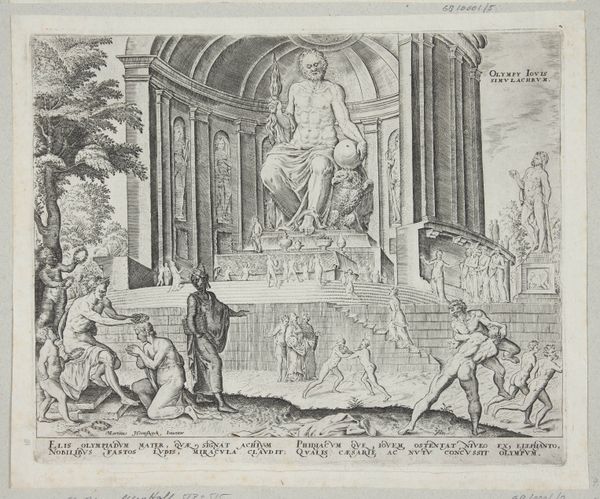
print, engraving
# print
#
mannerism
#
figuration
#
history-painting
#
northern-renaissance
#
engraving
Dimensions: 204 mm (height) x 250 mm (width) (bladmaal)
Curator: Welcome. We’re standing before "The Slaughter of the Priests of Samaria," a print created by Philips Galle sometime between 1567 and 1570. This work exemplifies the style of Northern Renaissance Mannerism and portrays a chilling episode of religious violence. Editor: Well, chilling is certainly the word that springs to mind! The atmosphere is intense – so many bodies, such active cruelty all etched in these very defined lines. It feels classical and horrible at the same time. There's a lot going on—where should the eye even land? Curator: Indeed. The scene depicts King Jehu's purge of Baal worshipers. It is inspired by the Old Testament's Book of Kings, specifically 2 Kings 10. The slaughter aimed to eliminate religious polytheism and assert singular dominion. Notice the architectural backdrop? Galle intentionally designed a setting referencing classical antiquity to suggest both authority and the sweep of historical narratives. Editor: Ah, yes, the columns – a really blood-soaked take on classicism. But isn't it interesting that even while showcasing a violent act driven by power, there's this almost theatrical composition at play? It looks almost like a stage, this setting of death and destruction, yet also of purification…It makes you think about how we use aesthetics to justify our worst actions, or to at least gloss them over. Curator: Precisely. It's vital to consider this work not just as a religious statement but as a political one. The printing press at this time became central in religious and political contestations. Prints like this served to spread ideas and reinforce prevailing narratives but at the clear expense of communities deemed outsiders. What looks “classical” is only one lens over what is definitely brutality, the bodies being piled up. How can this kind of propaganda operate today? It asks us uncomfortable questions about who controls our history. Editor: Exactly. You can get completely swept away with what you believe looks sophisticated. But under this perfectly-etched skin, something repulsive, something hateful hides. I wonder how many believed wholeheartedly they were doing “the right thing”? Curator: Indeed. Thinking about Galle’s engraving in the context of today demands reflection on the relationship between history, power, and representation, compelling us to confront both the overt and the subtle mechanisms through which discrimination operates. Editor: I think I will walk away with the idea that nothing looks exactly as it seems in times of terror. Perspective is, ultimately, relative.
Comments
No comments
Be the first to comment and join the conversation on the ultimate creative platform.
